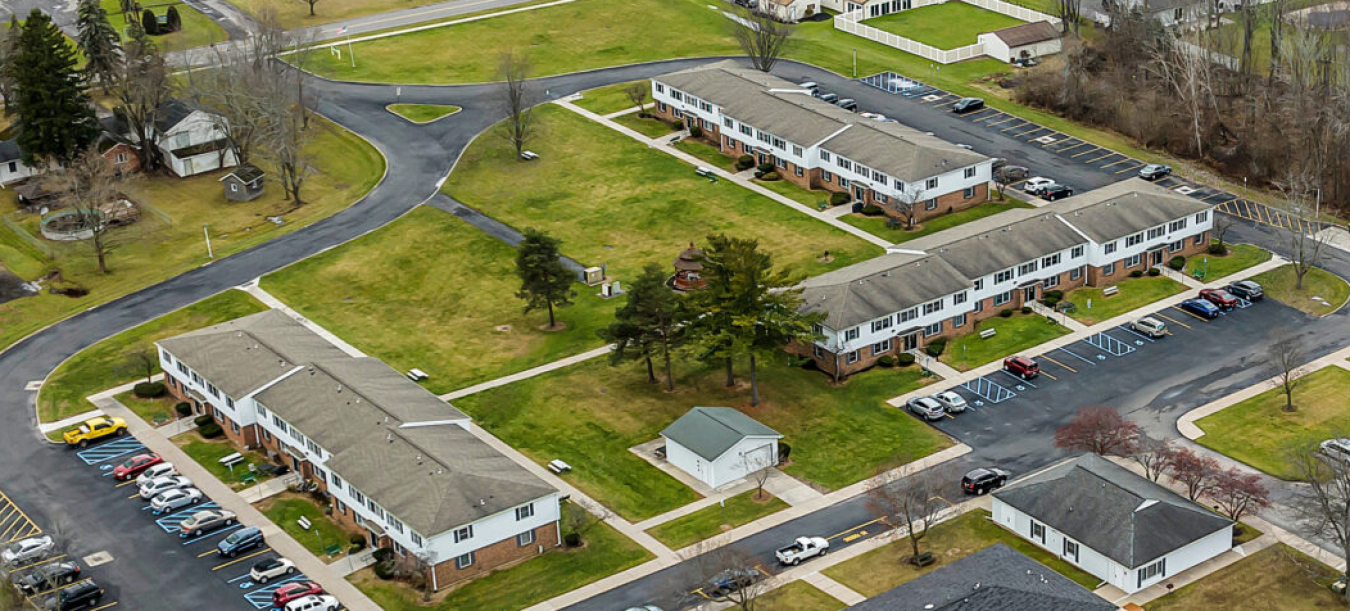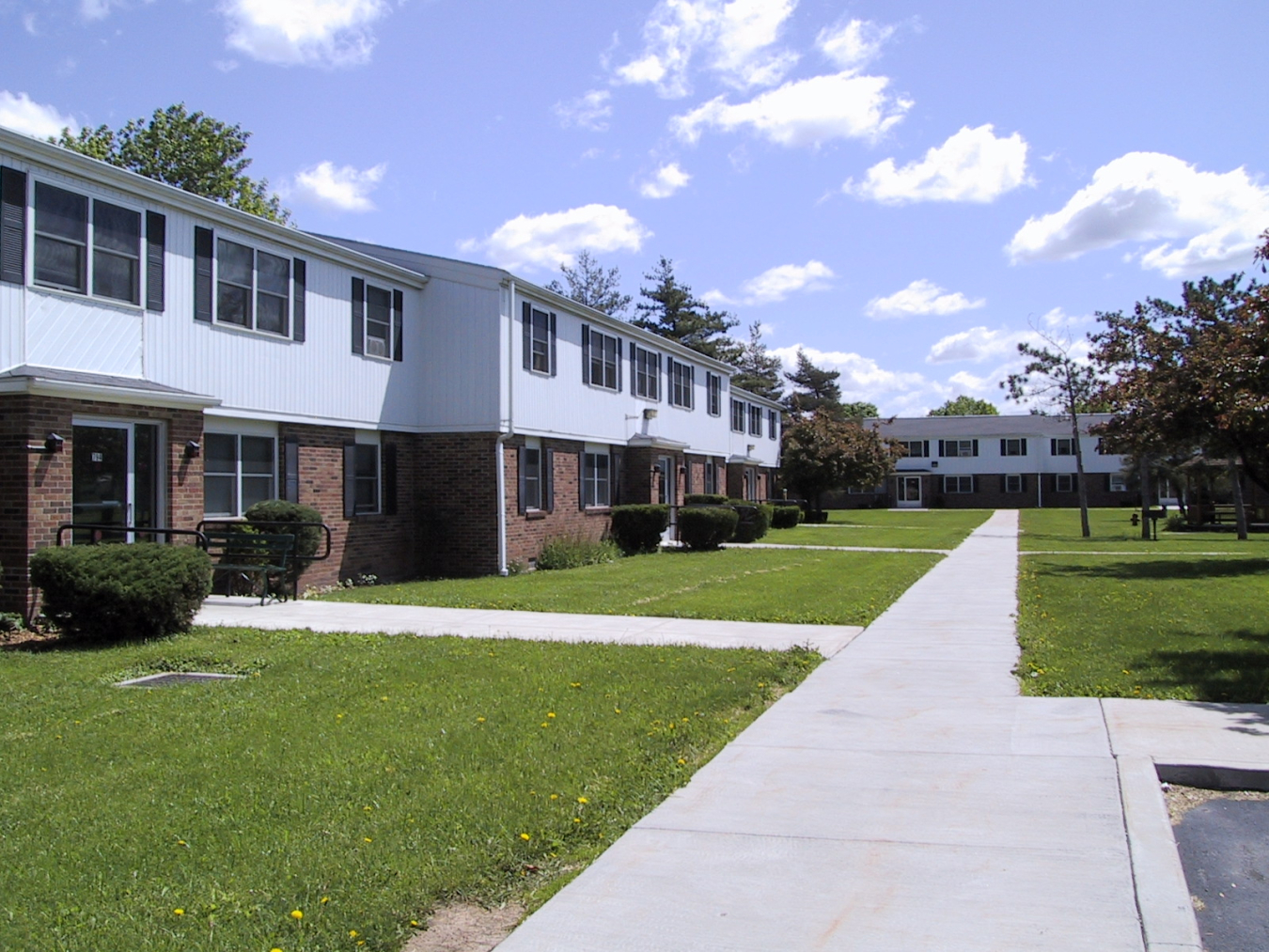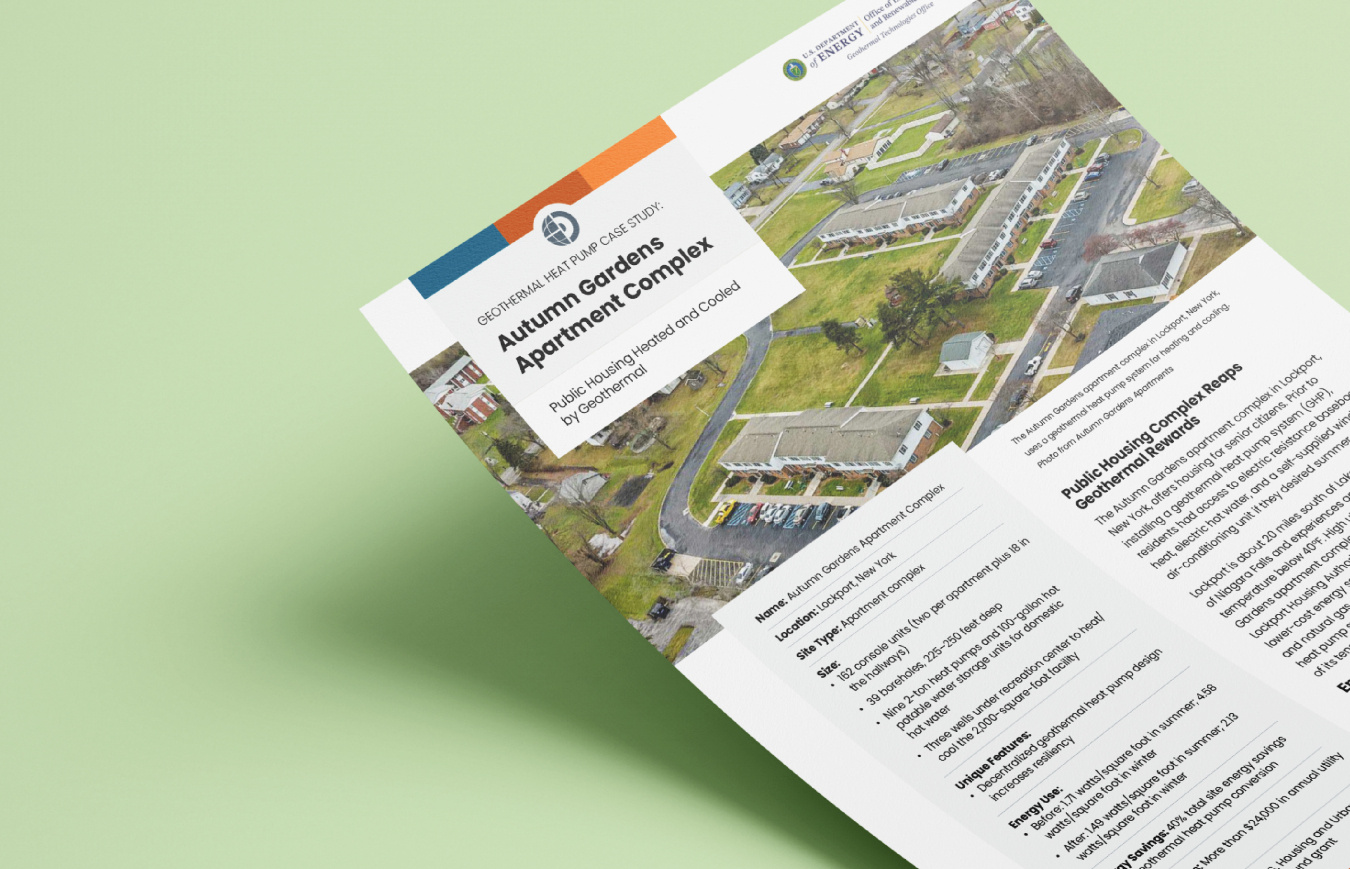
The Autumn Gardens apartment complex in Lockport, New York, uses a geothermal heat pump system for heating and cooling. Photo from Autumn Gardens Apartments
Fast Facts
Location: Lockport, New York
System Size:
- 162 console units (two per apartment plus 18 in the hallways)
- 39 boreholes, 225–250 feet deep
- Nine 2-ton heat pumps and 100-gallon hot potable water storage units for domestic hot water
- Three wells under recreation center to heat/cool the 2,000-square-foot facility
Download the full case study for additional fast facts.
Apartment Complex Reaps Geothermal Rewards
The Autumn Gardens apartment complex in Lockport, New York, offers housing for senior citizens. Prior to installing a geothermal heat pump system (GHP), residents had access to electric resistance baseboard heat, electric hot water, and a self-supplied window air-conditioning unit if they desired summer cooling.
Lockport is about 20 miles south of Lake Erie and east of Niagara Falls and experiences an average winter temperature below 40°F. High utility bills at the Autumn Gardens apartment complex prompted the City of Lockport Housing Authority (CLHA) owners to investigate lower-cost energy solutions. After exploring solar, wind, and natural gas, CLHA concluded that a geothermal heat pump system was the right solution for the comfort of its tenants and CLHA’s budget.
Engineering and Constructing a Geothermal Heat Pump System With Tenants In Mind
It was essential to CLHA to design a properly sized system with minimal impact on the tenants in the site’s 72 apartments. CLHA settled on a decentralized closed-loop geothermal heat pump system that supplied each apartment and a recreation center with heat in the winter, cooling in the summer and hot water. The construction project spanned 18 months and was completed in 2016.
The decentralized model at Autumn Gardens uses nine separate closed-loop geothermal heat pump systems for the living areas and recreation center with 39 boreholes, each about 225–250 feet deep. For the living areas, each system has two components in the basement: a 2-ton heat pump system along with a 100-gallon water storage tank. A single heat pump can produce enough hot water for eight apartments.

Seniors enjoy heat pump comfort. Since 2016, residents at the 72-unit Autumn Gardens apartment complex have enjoyed year-round comfort while a decentralized geothermal heat pump system works quietly underground. The system heats and cools each apartment while saving the City of Lockport (New York) Housing Authority $24,000 in energy costs annually. Photo by Autumn Gardens Apartments
As a decentralized system, 162 console units are spread throughout the complex, two per apartment and 18 throughout the hallways. Residents control their own thermostats for both console units and no longer have the burden of supplying their own air-conditioning unit. Vibration dampers were placed on the bottom of each console unit to ensure that decibels were kept to a minimum.
The recreation center uses three of the 39 boreholes, which supply heating and cooling via a furnace-style air handling unit.
Greater Resiliency and Savings Over a Centralized System
This decentralized system at Autumn Gardens has several advantages. Because each of the buildings has its own geothermal heat pump system, if one system fails, the others are not impacted. In addition, smaller construction zones meant minimal impact on residents' quality of life.
The loop field in the decentralized approach was about 30% less expensive to install compared to a centralized approach due to a smaller footprint and lower piping costs. Further, the simplicity of the system using redundant, individually controlled consoles and less ductwork and piping makes it 12% cheaper to operate than a centralized system.
In the first year post construction, CLHA realized 40.7% in total site annual energy savings, with an annual cost savings of approximately $24,000 per year.
Geothermal: The Gift That Continued To Give
The total system cost was $1.7 million. Savings from several years of accumulated U.S. Housing and Urban Development capital fund grants helped support the project. In addition, CLHA received a $93,600 New York State Energy Research and Development Authority rebate from their geothermal heat pump system. The CLHA team leveraged that money to install LED lights in all CLHA properties, which saved even more money on utility bills.
“The Autumn Gardens geothermal heat pump system was a good investment for CLHA and its residents, saving money on utility bills and completing drilling with minimal disruption to tenants. Before installing a geothermal heat pump system, it is critical to conduct adequate research up front and choose the right engineering firm with experience to design for your situation."
Jeff Haag, Modernization Coordinator/Maintenance Supervisor, City of Lockport Housing Authority
Energy Savings: 40% total site energy savings after geothermal heat pump conversion
Cost Savings: More than $24,000 in annual utility cost savings
Funding Source: U.S. Housing and Urban Development capital fund grant
Contacts:
For questions about this case study, contact Jeff Haag, JHaag@LockportHousingAuthority.com.
For any website technical issues or general questions about geothermal heat pumps, contact DOE.Geothermal@ee.doe.gov.
Printable Version
Download the printable Autumn Gardens Apartments case study or visit the Geothermal Heat Pump Case Studies page to see more examples of geothermal heat pumps in action.


